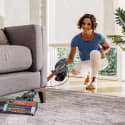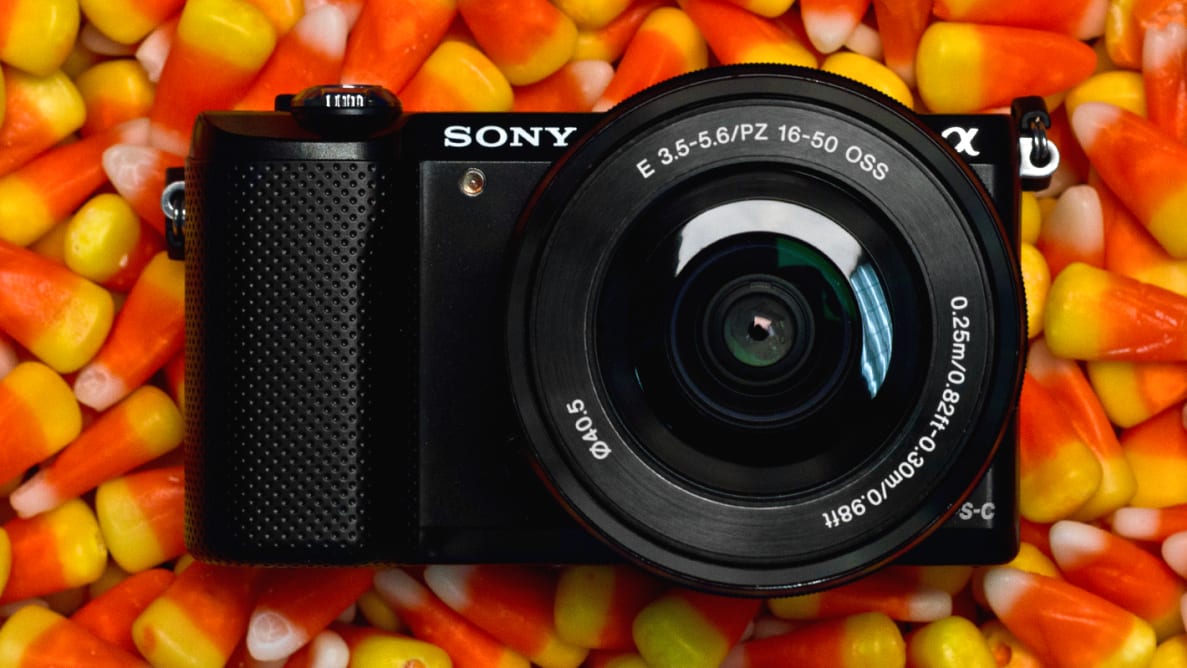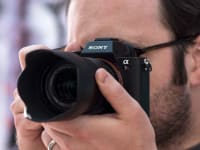Pros
-
Great grip feel
-
Compact
Cons
-
Slow burst action
-
Bulky lens
Looking to add to what is already a very impressive and thorough lineup, Sony has decided to slip another model between the low-end A5000 and the aforementioned A6000. Enter: the new Sony Alpha A5100 (MSRP $549.99). The A5100 bumps last year's NEX-5T out of the current lineup, ending Sony's "NEX" era forever while borrowing most of the same tech from this year's eye-catching A6000.
Describing the A5100 isn't difficult; it's basically a slightly slower A6000 minus a few creature comforts. The notable absences: You don't get the A6000's EVF (electronic view finder), hotshoe, 11fps burst shooting, or the extended ISO range. That's all a bummer, but it's $100 cheaper than the A6000 and prices should continue to fall. On the other end consider that for just $70 more than the low-end A5000 you get higher resolution images, 60p video, and a host of other improvements.
All three of these new E-mount Alphas are mighty impressive, but can this middle child stand out from the pack?
Design & Handling
An advanced camera that meets novice shooters on their level.
For years budget DSLRs have been trying their best to look like pro-ready DSLRs. All black paint jobs and loads of intimidating dials littered with jargon have been the norm. Not the Sony A5100, which actually looks more like a curvy point-and-shoot than anything a pro would shoot with. Despite this, the A5100 packs a full APS-C image sensor—the same size you'd get with any traditional DSLR under $1,500.
Once you attach a lens and start shooting, the first thing you'll notice is the camera's pleasing texture. Its grip is slightly rubberized, which is a welcome departure from the smooth plastic feel of most budget-friendly cameras. The grip is also much more substantial than the all-plastic grip of the A5000, calling back a bit to one our favorite Sony cameras, the plush NEX-7. It's pleasant to shoot with, even with bulkier lenses that dwarf the body.

The top controls on the A5100 are the same as the A5000.
The rear control scheme is exactly like the A5000, with three main buttons–menu, playback, and help/trash–in addition to a control wheel. The control wheel pulls double duty as a four-way directional pad, with options for drive mode, exposure compensation, ISO, and display. There is nothing new to note here, as Sony uses the same layout on the A5000 and a slight variant on the A6000.
The top controls feature the zoom lever (good for controlling powered zoom lenses), the shutter release, a power switch, flash release, and a dedicated record button. The zoom lever is responsive, but doesn't zip in and out so fast that you lose your subject–which can happen easily without a viewfinder. It also won't function at all if you're attaching lenses without powered zoom motors; you'll have to manually zoom most E-mount glass as a result. The design is simple and easy to navigate, even if most of your camera experience has been limited to point-and-shoots.
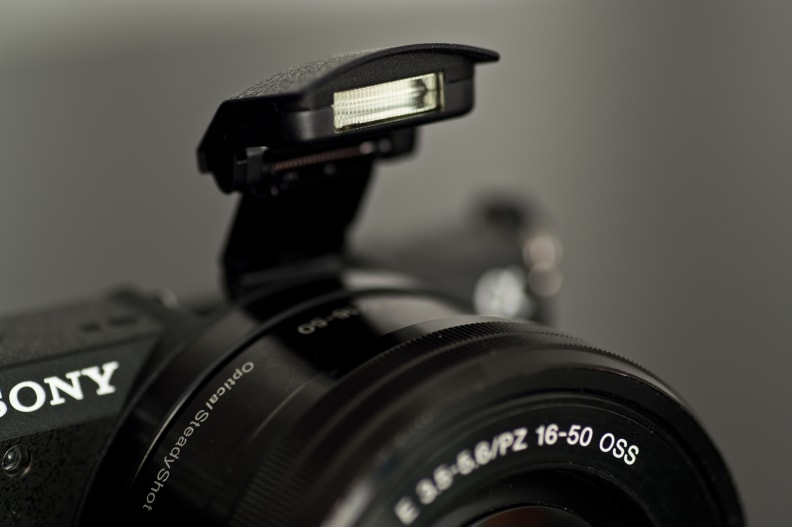
The pop-up flash is extra tall to shoot over longer e-mount lenses.
The biggest control change from previous Sony NEX cameras is the "new" menu. When you first pull up the menu you'll be greeted with the familiar tiled options, the same as Sony's used since the original NEX-3 and NEX-5. Unlike older NEX cameras, however, choosing any tile will bring you to the traditional list-and-tab style menu from Sony's Alpha cameras. This menu is far better organized than the NEX menu, and we highly recommend deactivating the tiled opening screen entirely in the setup menu.
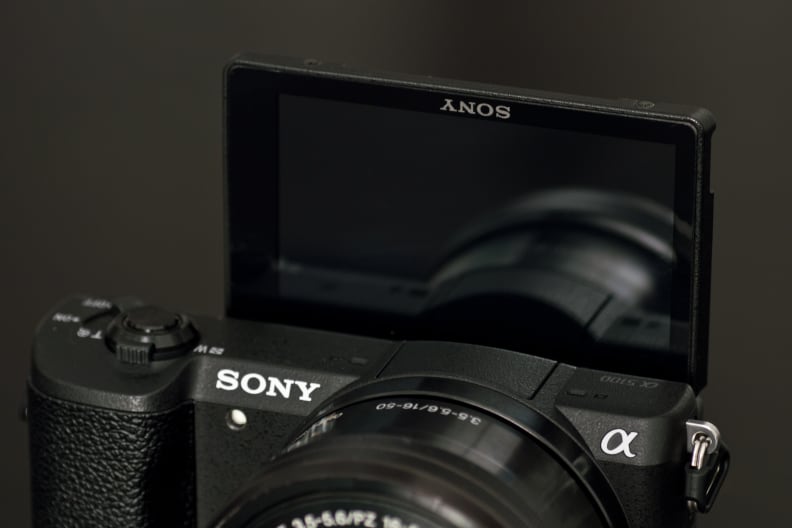
The A5100 is complete with a flip-up selfie-screen.
Another carry-over from the A5000 is the touchscreen. It flips up 180 degrees to face forward so your subject can see themselves. This is of course great for selfies and group shots, but the screen unfortunately does not tilt downward to aid overhead shots. The panel used here is even nicer than the one on the A5000, and the tilting functionality is something the A6000 doesn't offer.
{{ photo_gallery name="Tour" }}
Sony has equipped the A5100 with HDMI out and a USB connection–for charging and connecting to a PC–in the same bay as the memory card slot. There are left and right microphones that record stereo audio on either side of the pop-up flash and a speaker on the bottom of the camera. The pop-up flash is extra high in order to shoot over longer E-mount lenses, though overall range and power isn't any better than most built-in strobes.
Performance
A $700-and-under camera that performs like a far more expensive one.
When it comes to digital cameras, performance begins with the sensor/processor combination. Luckily, the A5100 inherits the stellar sensor and processor from its big brother, the Sony A6000. It also has the same hybrid autofocus system that uses both contrast-detection and phase-detection points to achieve focusing speeds as fast as 0.07 seconds. Last year's Sony NEX-5T also utilized this hybrid autofocus, but the A5100 benefits from more phase-detect points covering a larger portion of the sensor.
The result is a notable uptick in focus tracking speed and accuracy, even in limited light. The one nagging issue here is burst shooting. Despite having the same processor/sensor combo as the A6000, the A5100 can only manage to capture bursts at six frames per second—almost half as slow as the A6000's 11fps max burst speed.

In the lab we always begin by testing color accuracy to find the most accurate modes and diagnose any weak points. The A5100 didn't blow our hair back, performing about average for an entry-level DSLR. The "Standard" mode was the most accurate, while white balance accuracy was typically good.
One area where the A5100 excels, however, is in high ISO shooting. In this test the A5100 truly began to flex its muscles. With a modern APS-C sensor and Sony's superb Bionz X processor (which powers every Sony mirrorless camera from the A5000 up through the full-frame Sony A7S), the A5100 produced usable shots at most ISO speeds. Noise from ISO 100-800 is hardly noticeable–even when shooting in RAW.
{{ photo_gallery name="samples" }}
If you have to push the ISO above 800 we advise using some noise reduction, whether in the camera or–if shooting RAW—in a program like Adobe Lightroom. The in-camera noise reduction lowered noise percentages at the higher ISO levels, with an increasingly aggressive penalty to fine detail. You can shoot through the entire ISO range (100-25,600) without crossing a 2% noise ratio, but we recommend capping it at ISO 1600 if you want to keep your shots from turning into a low contrast puddle. Below you can see how the camera handles noise at higher ISO speeds and judge for yourself.

One area where Sony continues to improve is in video shooting. The A5100 matched the A6000 in our video testing, with subtle improvements due to autofocus speed. In our resolution tests the A5100 resolved around 600 line pairs per picture height horizontally (LP/PH) and 575 LP/PH vertically. In low light the A5100 dropped around 450 LP/PH both vertically and horizontally–which is to be expected with less light to work with. Surprisingly, the A5000 got as low as 3.5 lux in our low-light sensitivity test with the 16-50mm f/3.5-5.6 kit lens. The super low light video is incredibly noisy, but in extreme circumstances at least you can see what you've shot.
Features
Video, stills, and features that exceed the asking price
If you're familiar with previous E-mount Alpha/NEX cameras, there's not a lot here that'll surprise you. There's a mix of creative modes, manual controls, and high-resolution video and still shooting modes. There aren't a ton of advanced controls, of course, but there's more than enough for novices to sink their teeth into.
You also get the instant sharing option with built-in WiFi and NFC (near field communication). These allow you to use the PlayMemories Camera Apps to share images over your favorite social media sites, transfer images to mobile devices, and even use your mobile device as a remote control for the camera itself. One problem? Several of the PlayMemories apps cost extra money despite adding only basic functionality that other cameras include for free. Want timelapse shooting? Hope you're ready to cough up an extra $9.99.

As we briefly mentioned above, the A5100 has also inherited the selfie screen from the A5000, flipping to face your subject (in many cases, yourself) to help frame that perfect shot. It also has incorporated the "Smile Shutter," so you don't even have to click the shutter release–just smile and the camera does the rest. Some, like myself, would argue that smiling is much harder than clicking a button, but who are we to ruin all the selfie fun?
For you video enthusiasts, not only is the A5100 capable of Full HD 1080 recording at 60p, but it also records in the greatly improved XAVC S format, which is similar but far superior to AVCHD. This codec can record at a higher data rate of 50 Mbps with compression that retains high video quality. The new processor even allows you to record AVCHD or XAVC S with a lower-res MP4 video simultaneously to the same memory card. This means you can have a high quality video for editing and an MP4 file to quickly upload to something like Facebook or Youtube that will compress your video files anyway.
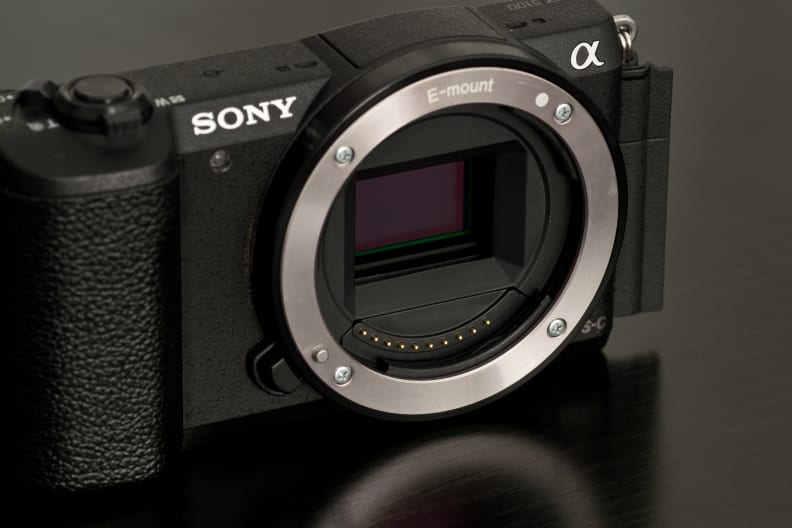
The sensor on the A5100 is the same as the mid-range A6000.
Still shooters haven't been left out in the cold, though. There are several scene modes that allow you to get the exact shot you want no matter what the situation is light-wise. There are actually nine modes in total, ranging from portrait, to sports/action, to macro, and even night scene. You can use these in conjunction with the 10 different effects–posterization, pop color, retro photo, partial color, high contrast monochrome, HDR painting, rich-tone monochrome, miniature, watercolor, and illustration–to enhance or change the photo's mood entirely. You can also use the posterization, pop color, retro photo, partial color, high contrast monochrome, toy camera, and soft high-key effects to shake up your videos, as well.
Conclusion
For beginners or those with designs on more advanced photography, the A5100 is a great option.
Sony's A7-series mirrorless cameras have been earning plaudits for their pro-quality video and full-frame sensors, but the low end of Sony's mirrorless lineup is arguably just as impressive. The A5100 is a perfect example, providing nearly all the stellar performance of the mid-range A6000 with the compact size and maneuverability of the A5000. While we don't expect pro-level cameras to be this size anytime soon (if ever), we do think that this is a great transition system for anyone upgrading from a point-and-shoot.
While the A5100 and A5000 both have the same target user, the A5100 (at $700 on Amazon with 16-50mm lens) offers better overall performance than the A5000 (roughly $400 on Amazon with 16-50mm lens)—that's not a small price gap. The A5100 gets you a better sensor, improved video options, on-chip phase detection autofocus, a wider ISO range, and a better display with touch, but $300 can get you a much better lens to go with your new camera.

The A5100 would be a slam dunk choice for advanced shooters, but there's also the A6000 ($748 on Amazon with 16-50mm lens) to consider. The A6000 is slightly larger than the A5100 with a beefier grip, a hotshoe, and an amazing EVF for only $100 more than the A5100. It also captures photos at up to 11 frames per second—nearly twice as fast as the A5100.
So why pick up the A5100 at all? Well, for slightly less money than the A6000 you'll gain a full-tilt selfie-friendly touchscreen and practically the same image quality as the A6000. The A5100 also gets the edge in the video department thanks to recording multiple formats of video with the XAVC S codec—including 1080/60p at 50Mbps as opposed to the A6000's use of AVCHD/MP4 for its 1080/60p video.
It's a tough choice, but we'd recommend advanced photographers opt for the A6000. If you're not interested in action photography or an EVF—or simply want a cheaper option—then our recommendation is to wait; the A5100 is a great choice, but you'll probably be able to find it for under $500 body-only soon.
Even at full price, it's hard to beat the value offered by Sony's range of mirrorless cameras. With sub-$600 cameras offering compact frames, this kind of stellar performance, and easy-to-use features, there's no mystery as to why point-and-shoots are being put out to pasture once and for all.
By the Numbers
With Sony slowly offing the NEX name with this year's A6000, A3000, and A5000, the final model to go was last year's excellent NEX-5T. The A5100 is the final nail in the NEX coffin, but Sony has ditched the name while luckily preserved the one thing that made the NEX-5T great: value. It is aimed at the same users as the A5000, but offers better performance and more video features. While we did love the NEX line here at Reviewed.com, we think that the new Alpha A series has truly upgraded each NEX camera and puts Sony near–if not on–the top of the sub-$1,000 mirrorless camera market.
Color & White Balance
Color on the A5100 is merely average. Standard is the most accurate color mode with a ∆C00 of 2.48 and saturation of 96.8%. We expected a bit more out of the A5100 since the A6000 had such great color accuracy and the A5100 has essentially the same insides. It's possible that Sony has tuned the A5100 to simply produce what it feels is a more pleasing color profile, but it's less accurate as a result. You can always get more saturated results with modes like Vivid or better skin tones with Portrait, but overall, standard is the most accurate.

Standard is the most accurate color mode for the Sony A5100.
White balance is obviously a big player in how color performs and on the A5100, white balance is acceptable most of the time. When using auto white balance, we saw tungsten struggle a bit–having errors around 2100 kelvin–but daylight and florescent are within 350 kelvin consistently. When we switched over to custom white balance, we got more accurate results–all averaged an error under 85 kelvin.
Resolution
We tested the A5100 with the 16-50mm f/3.5-36 (24-75mm 35mm equivalent) "kit" lens. It did fairly well in tests, but it does have a bit of both pincushion and barrel distortion throughout all focal lengths. If you shoot in JPEG and let the camera apply enhancement then you can expect an average of 2,038 line widths per picture height at a contrast level of MTF50. It is as sharp as 2,700 LW/PH in the center of images, but falls as low as 1,500 LW/PH on the edges.

The RAW shots tend to be a little softer as the A5100 doesn't apply the sharpening software as it does to the JPEG images. Even when it is applied, it doesn't seem to be too aggressive to the point of ruining quality–as we have seen from some cameras. If you're shooting fine details and printing to massive sizes, however, you should really be shooting RAW and developing later.
Noise
Noise on the Alpha series is certainly a shining light and the A5100 is no different. Noise from ISO 100-800 is hardly noticeable–even without the NR (noise reduction) engaged. You can shoot through the entire ISO range (100-25,600) without crossing a 2% noise ratio, but we recommend capping it at ISO 1600 if you want to preserve fine details. If you take a look at the chart below you can see how you start to lose the finer details once you float above ISO 1600.
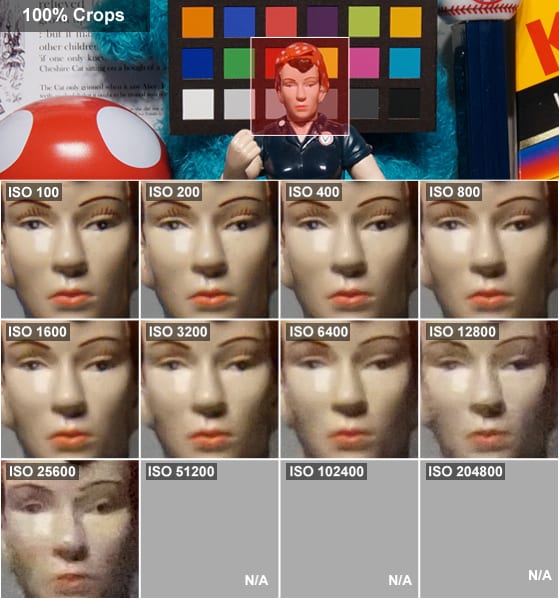
The NR did reduce noise at ISO 3200 and above by about 25%. However, you do lose a fair amount of fine detail. Ultimately if you absolutely have to shoot in low light you can use the noise reduction and still get a usable photo, but as always our recommendation is to stick with RAW in extreme situations and work it out later.
Video
Video on the A5100 is improved over even its big brother, the A6000. When capturing HD video we achieved around 600 line pairs per picture height horizontally (LP/PH) and 575 LP/PH vertically. In low light the A5100 dropped around 450 LP/PH both vertically and horizontally–which is to be expected with less light to work with.
Surprisingly, the A5000 got as low as 3.5 lux in our low-light sensitivity test with the 16-50mm f/3.5-5.6 kit lens. Though the resulting video is grainy and unusable for most people, so we recommend staying around 8 or more lux to get quality video that you can actually use. In a dimly lit restaurant or at a birthday party, though, the A5100 will do the job just fine.
The A5100 capable of Full HD 1080 recording at 60p, but the real benefit here is its use of the newer XAVC S format. This codec can record at a higher data rate than AVCHD, topping out at 50 Mbps with compression that retains video quality better. The new Bionz X processor also allows you to record AVCHD or XAVC S with a lower-res MP4 video simultaneously to the same memory card. This means you can have a high quality video for editing and an MP4 file to quickly upload if the highest quality isn't as important.
Meet the tester
As a photojournalist, Jackson has had stints working with bands, the military, and professional baseball teams before landing with Reviewed. Outside of Reviewed, he can be found looking for the next game to relieve his "Gamer ADD" or growing his beard.
Checking our work.
Our team is here for one purpose: to help you buy the best stuff and love what you own. Our writers, editors, and lab technicians obsess over the products we cover to make sure you're confident and satisfied. Have a different opinion about something we recommend? Email us and we'll compare notes.
Shoot us an email